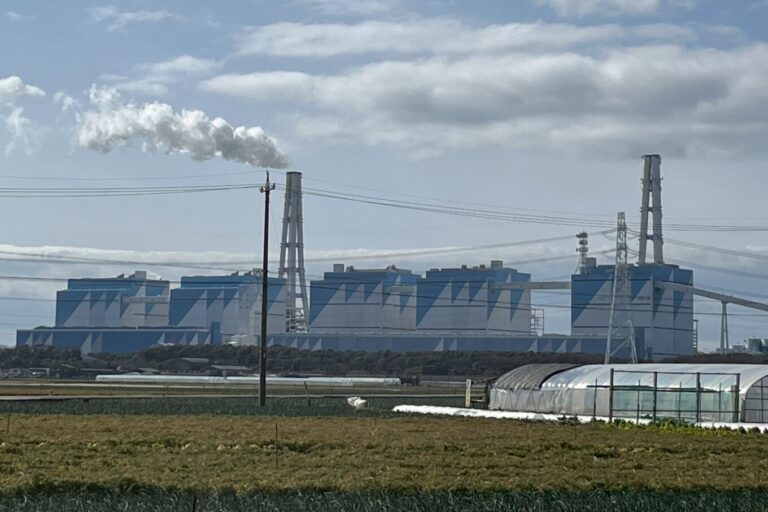On March 13, JERA, Japan’s largest thermal power generation company, announced it would start a demonstration test of 20% ammonia co-firing at its Hekinan Thermal Power Station (Unit 4) from March 26, 2024. *The test began on April 1.
Hekinan Thermal Power Station is one of Japan’s largest coal-fired power plants, with five units totaling a capacity of 4100 MW. Supported by the New Energy and Industrial Technology Development Organization (NEDO), JERA and IHI, which is responsible for the development of the ammonia co-firing burners, carried out a co-firing trial of ammonia equivalent to 0.02 cal% at Hekinan Unit 5 (power output: 1000MW) in FY2021. This time, they will conduct an experiment of co-firing 20% (heating value) of ammonia with coal at Hekinan Unit 4 (power output: 1000MW). This demonstration experiment is scheduled to last approximately three months, with fuel ammonia procured from overseas by Mitsui & Co. estimated to total around 30,000 to 40,000 tons. JERA says this will be the world’s first attempt to co-fire 20% ammonia in a large commercial power plant.
The combustion equipment, piping, and ammonia storage tank for this ammonia co-combustion demonstration test were unveiled to the press on March 13.
JERA insists that 20% ammonia co-firing can reduce CO2 emissions by 20%, and aims to commercialize 20% co-firing from FY2027 onwards. However, even if 20% ammonia co-firing is achieved, it still burns coal for the remaining 80%, so a significant amount of greenhouse gas is still emitted. Moreover, it will prolong the lifespan of coal-fired power plants.
JERA aims to achieve 100% ammonia firing in the future, but for the time being, gray ammonia (produced from fossil fuels) or blue ammonia (produced from fossil fuels but with some CO2 emitted during production captured and stored) will be imported and used, including the ammonia used in this demonstration trial. This means that JERA is co-firing using ammonia that emits CO2 during manufacturing and transport, which does not lead to significant emission reductions when viewed from a life cycle perspective.
Another issue is the high cost and lack of economic rationality of ammonia co-firing power generation compared to using renewable energy sources such as solar and wind, which are already technically established and proven to be highly effective in emission reductions. Above all, ammonia co-firing will lead to continued usage of coal for power generation even beyond 2030, and will jeopardize the achievement of the global 1.5℃ target.
JERA’s roadmap indicates it will start full-fledged 20% ammonia co-firing by 2030 and 50% ammonia co-firing in the 2030s, and shift to thermal power plants using 100% ammonia as fuel in the 2040s. Even if JERA is able to achieve 100% ammonia firing at large power plants, it is questionable whether it can get large enough quantities of green ammonia (ammonia that does not emit CO2 during production) for fuel. It is estimated that approximately 500,000 tons of ammonia would be required per year if only a single large scale power unit starts 20% ammonia co-firing- equivalent to half of the ammonia currently consumed in Japan. Instead of continuing down the path of fuel ammonia, which is ineffective in combating climate change, JERA should promptly make changes to its direction and focus more on expanding renewables.
In Japan, Kyushu Electric Power announced that an ammonia co-firing test would be conducted at Matsuura Kyushu Power Station, Unit 2 (Nagasaki Prefecture). Additionally, Okinawa Electric Power plans to start ammonia co-firing in Gushikawa Thermal Power Plant, Unit 1 (Okinawa Prefecture). Power companies are considering ammonia co-firing as a measure for decarbonization, but there is no time left to establish co-firing technology and build a supply chain to get the necessary amounts of green ammonia. Instead, a steady shift to renewable energy is needed to phase out coal-fired power generation by 2030.
Related Information
【Report】CREA: Air quality implications of coal-ammonia co-firing (Link)

